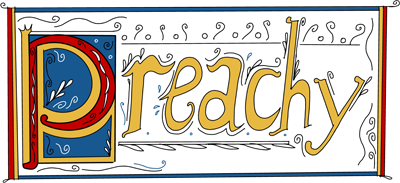
Female Scholarship In Islam Is Challenging Patriarchal Leadership
 For so long, I had grown up believing that social justice discourse, particularly through a gendered lens, was a completely separate sphere from Islamic discussions.. This post, for example, is not something that I am used to seeing. I mean: a religious scholar calling out the systemic abuse and silencing of women in religious circles, or highlighting the role of women throughout Islamic history?
For so long, I had grown up believing that social justice discourse, particularly through a gendered lens, was a completely separate sphere from Islamic discussions.. This post, for example, is not something that I am used to seeing. I mean: a religious scholar calling out the systemic abuse and silencing of women in religious circles, or highlighting the role of women throughout Islamic history?
In my experience, there was a general silence when it came to women’s roles in Islamic spaces – and what there was was mainly limited to that around being inside the home with family, no debate. As a Muslim woman, I always felt a little alienated from religious leaders who would seem to ignore completely women’s experiences in religious spaces. This, despite the fact that we grew up next to a mosque where the women’s section only opened for night prayers during Ramadan; we were taught not to question many of the rules imposed on us that positioned men as being superior to women. So when I came across Maryam Amir’s #thehijabseries on Instagram — where she gathers resources and shares insights on some of the ways women’s voices need to be highlighted within Islamic discussion and engages in community-building — I was more than a little surprised: Here was a complex set of social justice discourse delivered through a gendered lens and brought together with Islamic discussion. Amir’s work let me explore how women were reclaiming Islamic discussions in different spaces — from literature, and the subsequent book clubs inspired by these books, to mental health awareness, community aid and more.
But Amir, a professor of Islamic Studies, is hardly the only voice in this growing space of women challenging patriarchal narratives within Islamic communities and scholarship. Leading figures like Kecia Ali, Asma Barlas and Rania Awad are some of the more prominent women in this new space that is challenging how loud Muslim women can be in their advocacy and understanding of religion. Many of these demands come from a space where generations of silencing — in particular silencing in terms of the public role Muslim women play in Islamic communities — has had a dramatic impact. . Shabana Mir, dean of Undergraduate Studies and associate professor at American Islamic College, points to some of the misconceptions around women in Islamic scholarship that feed into these dominantly patriarchal narratives. These misconceptions include perceptions around Muslim women in scholarship: “That they don’t exist. That they are untrained and unqualified. That they are inferior to male scholars. That they are irreligious. That they are oppressed and have no agency or perspective of their own,” says Mir.
Such perspectives that silence Muslim women have led to women pursuing different avenues of scholarship and participating in Islamic discourse both academically and through community engagement. More often than not, particularly within western communities, there is an immediate connection between gender, social justice, and feminist movements. In fact, intersectional feminist scholars have long argued for global cultural and religious spaces to be evaluated through a gendered lens, so that women of color, and those from marginalized communities, can create space in the context of their own lived experiences. Shenila Khoja-Moolji, a scholar of gender and Islamic Studies at Bowdoin College, argues that “a feminist lens can enable us to understand both the ways in which community spaces exclude minoritized groups, as well as how to make these spaces inclusive through reforming policy and practice.” She explains further that “ultimately, feminism in Muslim spaces is about engaging in reparative work that can heal and unite our communities.”
But Muslim communities in the west have had a controversial relationship with feminism, and the term has become quite politicized within these areas of discussion. Despite the fact that many Muslim women, and even scholars, agree with the need to create inclusive spaces through “reforming policy and practice,” as Khoja-Moolji says, they shy away from associating the term feminism with those beliefs. Assistant Professor of religion at Trinity University Sajida Jalalzai says that the hesitation around associating with feminism in Muslim communities comes from a historical marginalizing of Muslim women within feminist circles and how white feminists have long focused on saving Muslim women from Muslim men.
Literature like Asma Barlas’s Believing Women in Islam, and more community focused groups have been paving the way from a new lens on religion. Sylvia Chan-Malik, associate professor at Rutgers University, says she often sticks to terms like “gender justice” over feminism because it helps move the conversation forward. “One of the interesting things that is happening is that stuff like Amina Wadud’s Quran and Qomen, and other authors and books have been coming in the last decade – women are connecting across transnational spaces where women are not becoming secular but rather reengaging with Islam, and there’s still certain ‘traditional’ spaces where women have not felt welcome and have felt their contributions are not valued. Many of them have not stayed to fight that but instead gone on to university, getting PHDs in gender studies, religious studies, and creating their own space particularly in academia,” she says.
A big part of her work has been to link gender justice in Islam to Islamic history and women’s liberation rather than modern movements. Speaking of Islam in the U.S., she points out how prior to the 1960s the vast majority of Muslims were Black, adding, “One of the central reasons Black women chose to convert to Islam were issues of gender justice, trying to find safety, justice and humanity beyond the larger structures of white supremacy. Not everyone who converted achieved it, but that’s what Islam represented to them because of their status in American society and Islam provided an attractive alternative that seemed more egalitarian.” She further points out that much of Islamic interpretation and the way it is practiced needs to be understood in cultural contexts, and so gender roles in Muslim communities between Asian communities or African American communities will be different. For Sadaf Jaffer, a politician, activist and educator, understanding that diversity comes from paying attention to new avenues where women’s voices are being highlighted “helps us if we expand what sources and what types of authority we pay attention to, because outside of those traditional fields women are doing amazing things.” She adds that “it also helps us widen our own view of what we accept as being part of Muslim thought.”
Even though spaces are opening up, Muslim women still struggle to find places where they can engage with Islamic discourse, Mir suggests, because “women are shut out of religious education due to false modesty norms, and then judged unqualified — it’s a vicious circle. Academic training is open to women, and it is judged ‘western.’”t.
And so more and more Muslim women are connecting globally through academia, and then using those networks to further build their own spaces. Whether it’s Rania Awad’s mental health initiative focusing on Muslim communities or Sameera Qureshi’s creation of a space to discuss sexual health for Muslims, Muslim women are engaging with Islam in constructive and community-led ways. These initiatives are making Muslim women, and Muslim communities as a whole, feel seen. They no longer have to rely on higher leadership to dictate the rules or norms for them — instead, they can seek out a more egalitarian education around their identity on their own. This engagement outside of traditional patriarchal and white feminist structures that seek to exclude diverse voices can also help challenge Islamophobia and break barriers between Muslims and non-Muslims engaging with constructive discourse. Candace Mixon points out that she began to engage with women in Islam after studying Iranian culture and the role of Fatima in Islamic history. Now she actively seeks to teach gender and Islam to students who come from diverse backgrounds and who can engage with gender discourse in new ways. Championing these narratives outside of only Muslim circles also allows Muslim women to move past that barrier of having their identity as a Muslim limit them to only Islamic communities and explore how their identities intersect with the wider world at large.
